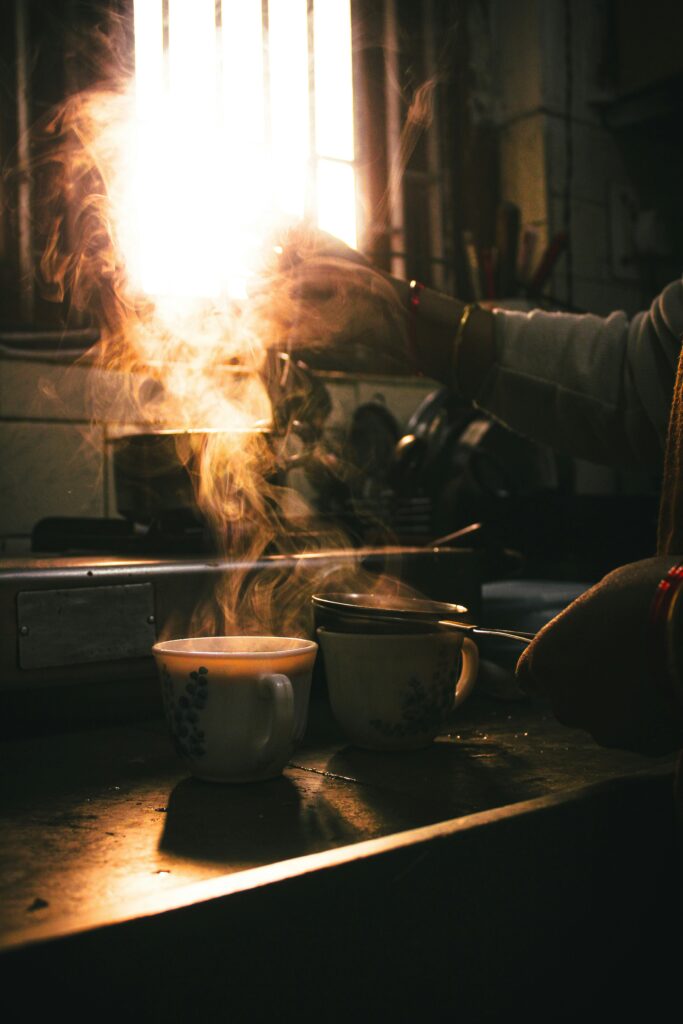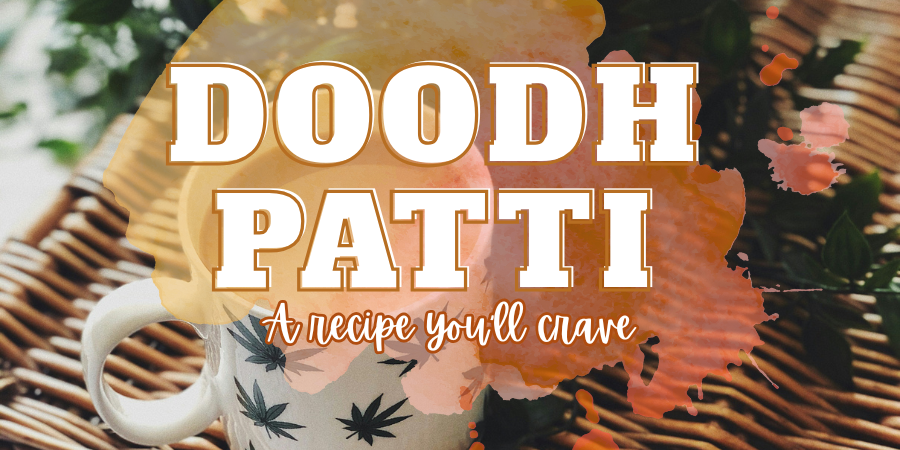Doodh patti is more than just chai — it’s a quiet tradition in many Pakistani homes. This rich, comforting beverage is steeped directly in milk, not water, giving it that creamy texture and mellow flavor. Served in chipped cups on wooden trays, often with biscuits and snacks, it’s a regular part of tea time across the country. Whether made with loose leaf tea or teabags, this brew is strong, packed with flavor, and deeply rooted in desi culture. Unlike Kashmiri chai or phitti hui coffee, it requires no baking soda or constant stirring, making it a simple, proper version loved by many. From breakfast to lunch, dinner to movie night, chai is always the guest of honor. Doodh patti is lighter as compared to classic Pakistani chai.
In our home, the recipe has been tested and perfected by family over time. But it’s my aunt who truly brings its value to life. No matter how long her day has been, she won’t sleep without a warm mug of doodh patti after dinner. She says it doesn’t just help her unwind—it wakes something peaceful in her soul. For her, it’s not just a drink, it’s a connection to her roots, to countless shared meals and quiet moments. That single cup, steeped on the stove with care, brings a kind of comfort only desi beverages can. Loved across cultures—by Pakistanis, Afghans, Indians, and Iranians alike—this simple drink holds a special place in everyday life.
Recipe
- Start by removing the paper tabs from black tea bags and drop them into simmering water in a small saucepan. Or preferably you can just add tea leaves. Classic Pakistani style.
- Let the water boil until it turns deep and dark in color. Reduce the water by half regardless of your batch size.
- Add a smattering of ground cardamom and sugar to taste. Let it simmer for a few minutes on low heat.
- In Pakistan, full fat milk is used for its richness, but in North America, evaporated milk works well too.
- You can also split evaporated milk and whole milk evenly for a balanced creamy flavor.
- If using tea bags, add 1–2 bags to the milk mixture once it starts to boil.
- If using tea leaves, use about ¾ tbsp and let them steep in the mixture on medium-low heat.
- Place a wooden spoon horizontally across the top of the pot to prevent the milk from boiling over.
- Crush your cardamom pods using a mortar and pestle—just open them, don’t disintegrate.
- Add cinnamon and the crushed pods to the milk and bring to a boil again.
- Steep everything together until the mixture is reduced and aromatic.
- Use a ladle to lift and pour the tea back into the pot a few times to aerate and create a generous froth.
- Once ready, remove the tea bags or strain the tea to catch any solids.
- Depending on your taste, adjust the sugar and serve hot.
- This chai pairs perfectly with sweets or even a crispy samosa for a comforting experience.
Doodh patti pros and cons
- Benefits:
- Provides a creamy flavor that relaxes the soul and offers emotional comfort.
- Cardamom may aid digestion, reduce inflammation, and help control blood pressure.
- Milk adds calcium, protein, and vitamin D, supporting bone strength and muscle repair.
- The warmth of doodh patti can help relieve minor cold symptoms and improve circulation.
- Often shared during tea time or meals, it encourages bonding and social connection.
- Side effects:
- Too much sugar can lead to weight gain and increase the risk of diabetes.
- Full fat milk may not be suitable for those on low-fat diets or lactose intolerant individuals.
- Strong tea leaves contain caffeine, which in excess may cause acidity, restlessness, or poor sleep.
- If the pot isn’t cleaned well after each use, leftover milk solids can affect taste and hygiene.

Measurements? Nahhh
In most Pakistani homes, doodh patti isn’t made using exact measurements—it’s made with feeling. The recipe lives in memory, not in measuring spoons. Whether it’s a smattering of ground cardamom, a generous splash of full fat milk, or just the right moment to drop in the tea bags or tea leaves, Pakistanis have these steps engraved on their hearts. The deep, dark boil, the low heat simmer, the aroma of cinnamon or sugar to taste—it’s all part of the process they’ve mastered over years. These measured values are only offered for precision, especially for those outside of Pakistan or trying to recreate the comforting flavor of real doodh patti for the first time.
Best Time to Enjoy Doodh Patti
Doodh patti naturally fits into many moments of the day and offers warmth, flavor, and comfort when enjoyed mindfully:
- Early morning, around 7 to 9 am, to gently wake the body with a moderate caffeine lift.
- Mid-morning, after breakfast, when digestion is active and a small cup helps refresh without feeling heavy.
- Late afternoon, between 4 to 6 pm, during tea time when energy dips and a warm cup boosts focus.
- After dinner, a common routine in many Pakistani households, to relax and settle the stomach—ideally, keep it mild in strength.
- On cold, rainy evenings, when a hot cup feels especially soothing.
- During study or work breaks, offering clarity and a calming pause.
- At weddings, family gatherings, or cultural occasions, where chai is a shared experience.
- When dealing with minor fatigue or light headaches, as the warmth and aroma can provide gentle relief.
However, it’s important to note that too much doodh patti isn’t ideal. The caffeine from strong tea leaves, when consumed in excess, may lead to acidity, poor sleep, or dependence. It’s generally best not to exceed two to three cups a day. For those with sensitivity to caffeine or underlying health conditions, one well-timed cup may be enough to enjoy its benefits without discomfort.
Why should you prefer doodh patti over coffee
Doodh patti is often preferred over coffee when it comes to gently waking up the body and mind without causing jitters or restlessness. While coffee can deliver a quick, intense burst of energy due to its high caffeine content, doodh patti provides a milder stimulation that helps you feel refreshed and alert in a more balanced way. The presence of milk and cardamom in doodh patti adds a calming effect, supporting digestion and reducing acidity, which coffee may sometimes trigger. It’s the perfect choice for those who want to feel steady and focused without the sharp highs and lows that often follow a strong cup of coffee.
